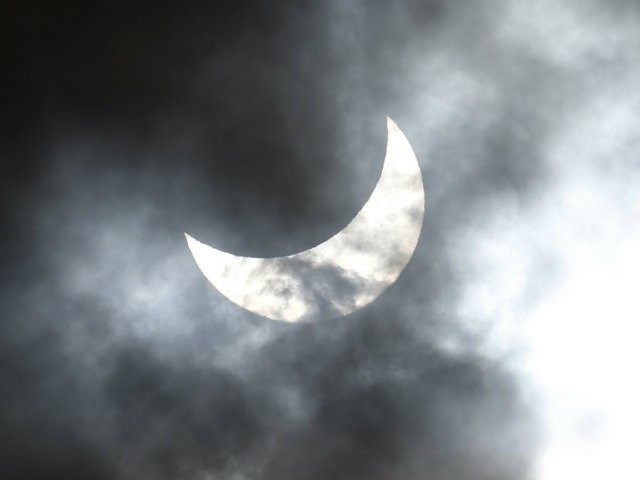Whilst the vast majority of Europe is looking forward to watching next week’s solar eclipse in wonder and delight, for the people in charge of Germany’s power grid, the celestial event poses a major problem. Seven percent of Germany’s electricity comes from solar technology, meaning that a rapid drop in daylight will cause a massive and sudden shortfall in supply. (h/t Mashable)
Germany is currently the most solar powered nation on earth. Fully one quarter of all solar electricity capacity is located in the country, and on a sunny day, anywhere up to half of Germany’s electricity can be coming from the solar grid.
But in the space of just 75 minutes on the morning of March 20th, the moon will move between the sun and the earth, blocking out up to 73 percent of the sun’s rays. Consequently solar energy production will drop off rapidly, up to 2.7 times faster than it normally does, followed by a slingshot back up to expected levels at 3.5 times the usual rate, according to energy analysts Opower.
“Germany’s 1.4 million solar power systems are in for a wild ride,” say analysts Barry Fischer and Ben Harack.
They point to a similar solar event in the Western US states, where the majority of America’s solar technology is based. In that case, on the afternoon of October 23rd, 40 percent on average of the sun was blocked during an eclipse, causing a commensurate 40 percent decline in solar electricity output, equivalent to 1,000 megawatts of supply. Grid operators reacted by bringing huge quantities of thermal energy online, thought to be from gas fired power stations.
The analysts expect Germany to cope in the same way. “When the eclipse hits and solar power supply starts to tumble, German energy providers and grid operators can respond with a combination of strategies — such as releasing energy stored behind hydroelectric dams, turning on quick-start natural gas power plants, or importing electricity from neighbouring countries,” they say.
Conversely, as the moon moves past the sun they will reverse the strategy, storing more energy behind hydroelectric dams and exporting power abroad. They are also likely to try to encourage energy users to shift their pattern of usage towards the timeframe in which sunlight is flooding back in.
The analysts expect Germany to manage the challenge posed by next week’s eclipse. However, they point out that, if countries successfully reach their targets of vastly increasing reliance on intrinsically unreliable natural energy sources, grid operators could be faced with such wild swings on a daily basis.
The German government currently has plans to increase solar capacity to 66 gigawatts. If they succeed, “a clear-sky sunrise in 2030 could drive an increase in solar power supply as steep as the rebound phase of 2015’s eclipse,” say Fischer and Harack.
Similarly, California currently has plans to generate 33 percent of its energy supply from renewable sources by 2020. Doing so would mean that grid operators would have to pull off an “extremely brisk” increase in non-solar output at sunset during certain times of the year, to cope with a rapid drop off in solar output combined with a rapid increase in usage.
They conclude “As the electricity produced by renewables like solar and wind continues to grow, the grid will inevitably see larger swings in power production.” A shift towards fast-ramping power plants offers part of the solution, but they also expect “adjustments to customer energy behaviour” and “dynamic power pricing” to play a role, suggesting that, as with renewable subsidies, it will be householders who foot the bill.

COMMENTS
Please let us know if you're having issues with commenting.